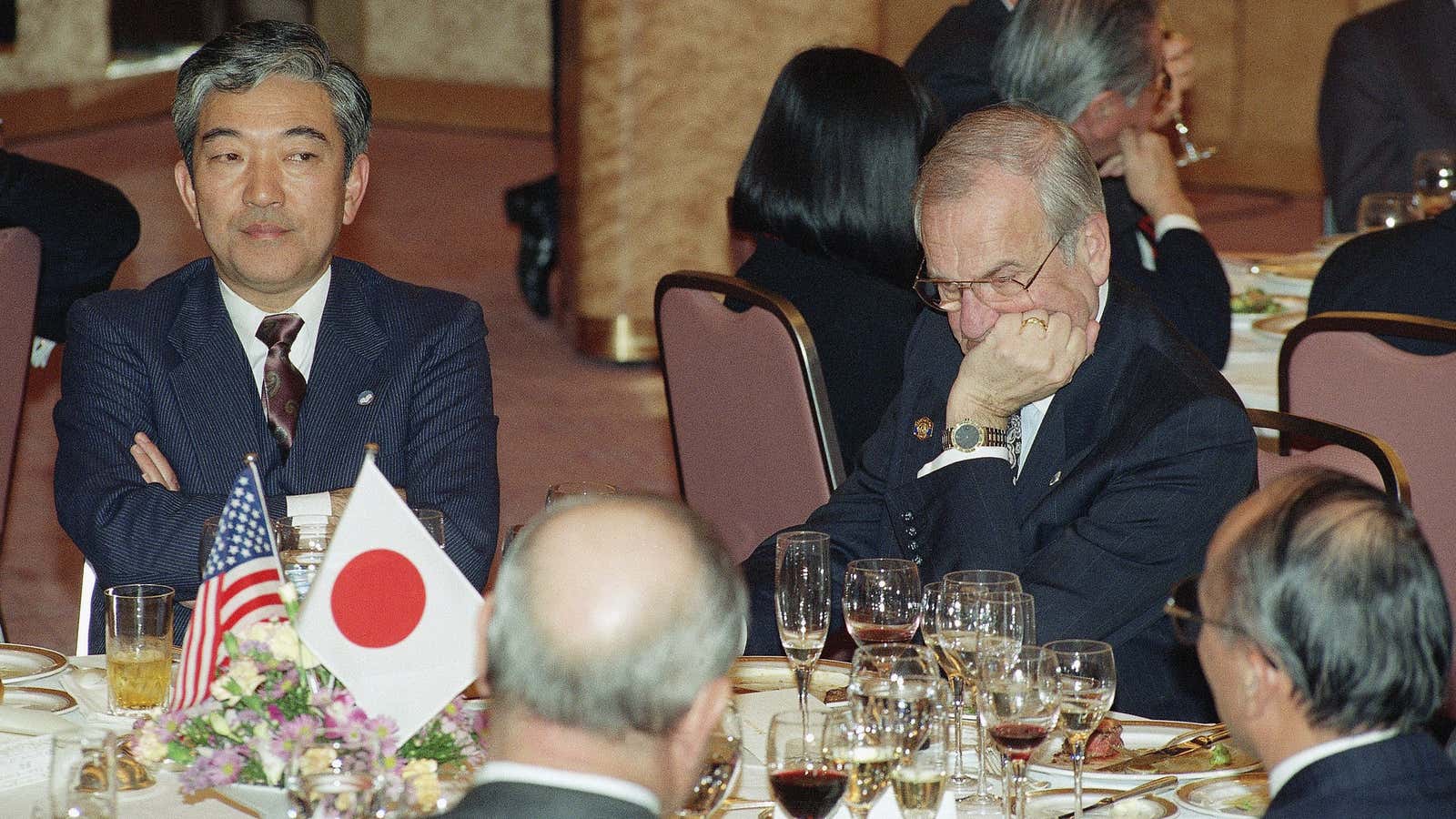Any journalist tasked with writing a remembrance of Lee Iacocca in the wake of his passing late yesterday (July 2), will have one particularly delicate issue to grapple with: the legendary Chrysler chairman’s history of hurling sometimes savage insults at Japan.
In the 1980s, Iacocca became perhaps the most outspoken critic of Japan’s carmakers and its government, the latter of which he accused of propping up the former so that inexpensive Toyotas and Hondas would appeal to American buyers. But his regular accusations of “predatory trade” and “insidious Japanese economic and political power within the United States” were nothing compared to the more direct shots he took at the Japanese people and their culture.
As the New York Times notes in its obituary, when Japan’s fuel-efficient cars were stealing market share from US brands, and Detroit was sinking, Iacocca crossed the country “demonizing” the Japanese, declaring that Chrysler’s cars were sturdier, while Americans had been fooled by Japan’s “teflon kimono.”
It got worse than that. “Once, in an interview, I was asked about the recognition of Chrysler products in Japan, so I said, ‘Jesus Christ, they certainly know the Jeep—they saw enough of them in World War II!’” he told Playboy magazine, as Automotive News recounts. In fact, he believed he was modeling self-restraint; he told the magazine that he wanted to say something even more graphic and vile.
Nevertheless, the Japanese press, in remembrances published in the wake of his passing, has so far depicted Iacocca mainly as a heroic American businessman who managed to save Chrysler. Yes, most of the articles report that he took issue with Japan’s auto industry, but none of his racist lashings are revisited.
Quartz reviewed several Japanese news stories about Iacocca’s death and found that only one newspaper, the conservative Sankei Shimbun, remarked that the American had led the “Nippon tataki,” or Japan bashing, of the time. Most of the news stories did, however, mention his best-selling autobiography, the creatively titled Iacocca: An Autobiography, which was widely read in Japan. (In the Japanese version, the title promises insight into his “fighting spirit” as the defining trait of his management style.)
To be sure, it’s possible that more critical accounts of Iacocca’s legacy will still be published, but it’s also conceivable that his bashing feels irrelevant to today’s readers.
Iacocca’s attacks didn’t work so well 30 years ago, either. The bashing was seen by many as regressive and reminiscent of ugly wartime prejudices. It was unseemly for a US business leader, but it was also ironic, given that Iacocca’s parents were born in Italy, another one of Germany’s allies in the Second World War. It became doubly ironic in 1991, when a myriad of factors led to Mitsubishi rescuing Chrysler, its business partner by then, to the tune of $222 million, or more than $400 million in today’s dollars. The Japanese company even purchased some of Iacocca’s vacation homes.
By that time, Iacocca had taken a new tack, arguing that the American response to Japan’s success should be to rise to the challenge rather than fear it—and presumably rather than pathetically try to turn public opinion against it.
“Lee Iacocca’s astonishingly self-righteous and ill-informed tirades against the Japanese are well on their way to becoming artifacts of folk mythology,” the Washington Post wrote in 1992.
Years later, it appears we have little time to examine such relics. Thankfully, today’s auto industry leaders are seemingly not in much danger of making the same mistakes.
